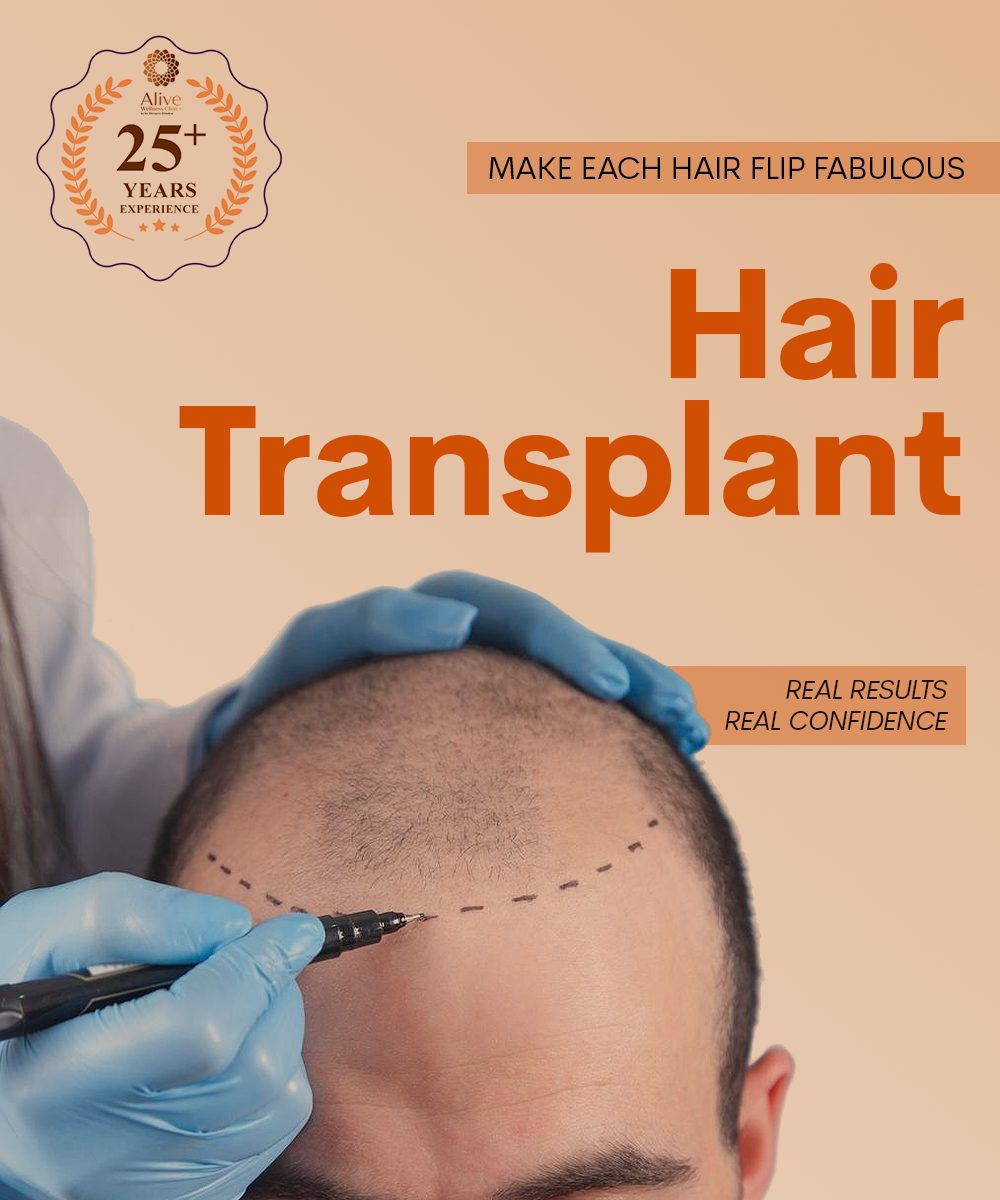What is Hair Transplant?
A hair transplant is a surgical procedure that involves relocating hair follicles from one area of the body—usually the back or sides of the scalp, known as the “donor site”—to areas experiencing thinning or baldness, referred to as the “recipient site.” While commonly used to treat male pattern baldness, this technique can also restore hair in other areas such as the eyebrows, beard, chest, or over scars from injury or surgery. Because the transplanted follicles are typically resistant to hair loss, the results are both long-lasting and natural in appearance.
Different Types of Hair Transplant Techniques
FUT (Follicular Unit Transplantation)
This technique involves removing a strip of scalp from the donor area, usually at the back of the head. The strip is then dissected into individual follicular units and implanted into the recipient area.
- Key Points: More invasive, leaves a linear scar, uses bulkier grafts, and may result in a less natural appearance.
FUE (Follicular Unit Extraction)
In this method, individual follicular units are extracted directly from the donor area using tiny punches and then implanted into the thinning or balding area.
- Key Points: Minimally invasive, no linear scarring, faster healing, and currently the most widely used technique. Over 95% of clinics utilize micromotor-assisted FUE for greater efficiency.
Other Technical Variations
Several refinements to these techniques are available, such as:
- Manual vs. Micromotor-Assisted FUE
- Slit Technique for Graft Placement
- Sapphire-Tip Slit Technique for enhanced precision and healing
These variations aim to improve accuracy, healing time, and overall aesthetic results.
Benefits of Hair Transplant?
- Permanent Results: Transplanted hair follicles are naturally resistant to the effects of balding, offering a long-lasting and reliable solution to hair loss.
- Natural Appearance: Advanced techniques use individual follicular units to replicate the natural direction, density, and pattern of hair growth, ensuring seamless and realistic results.
- Enhanced Confidence and Aesthetics: Restoring a fuller head of hair not only rejuvenates your appearance but also boosts self-esteem and overall quality of life.
- Low Maintenance: Once the transplanted hair has grown in, it requires no special care. It can be washed, cut, and styled just like natural hair.
- Cost-Effective in the Long Run: Although the upfront cost may be significant, a hair transplant eliminates the ongoing expenses of temporary treatments, making it a smart long-term investment.
- High Success and Satisfaction Rates: Modern hair transplant procedures boast high graft survival rates and strong patient satisfaction, making them a trusted solution for hair restoration.
Side Effects of Hair Transplant?
Scarring: FUT typically leaves a linear scar at the donor site, while FUE may result in tiny dot-like scars that are usually minimal and easily concealed.
Swelling and Bruising: Some temporary swelling may occur around the scalp, forehead, or eyes, usually resolving within a few days.
Infection: Although rare, infections can occur if post-operative hygiene is not properly maintained. Following aftercare instructions significantly reduces this risk.
Bleeding: Mild bleeding during or shortly after the procedure is common and generally stops on its own or with minimal care.
Pain or Discomfort: Most patients experience only mild discomfort, which can be effectively managed with prescribed pain relievers.
Shock Loss: Temporary shedding of transplanted or surrounding hair, known as shock loss, may occur but is usually reversible, with regrowth expected in a few months.
Itching and Numbness: Itching and a sensation of numbness in the treated areas are common side effects and typically subside within a few weeks.
Unnatural Hair Growth: In rare cases, poor surgical technique can result in uneven or unnatural-looking hairlines. However, this is uncommon when the procedure is performed by a skilled and experienced surgeon.
Procedure of Hair Transplant?
- Consultation: Assessment of hair loss pattern, donor area quality, and patient expectations.
- Preparation: Trimming and cleaning of donor area; administration of local anesthesia.
- Extraction: Depending on the technique, either a strip of scalp (FUT) or individual follicles (FUE) are harvested from the donor site.
- Graft Preparation: The harvested follicles are prepared and sorted under a microscope.
- Recipient Site Creation: Tiny incisions or slits are made in the recipient area to receive the grafts.
- Implantation: Grafts are placed into the prepared sites, ensuring natural orientation and density.
- Recovery: The procedure typically takes 6–8 hours. Multiple sessions may be required for extensive hair loss. Healing time varies, but most patients resume normal activities within a few days.
Who is a Good Candidate for Hair transplant?
- Age Consideration: Candidates are typically over the age of 25, as hair loss patterns become more predictable and stable with age.
- Type of Hair Loss: Hair transplants are most effective for individuals with androgenetic alopecia (male or female pattern baldness) or hair loss resulting from trauma, burns, or previous surgeries.
- Donor Hair Availability: Adequate healthy hair in the donor area—usually the back or sides of the scalp—is essential for a successful transplant.
- Overall Health: Good general health is important. Candidates should not have uncontrolled medical conditions or active scalp infections that could compromise healing or outcomes.
- Realistic Expectations: Understanding the potential results, limitations, and risks is key. Candidates should have clear, achievable goals and a realistic outlook on what the procedure can deliver.
- Lack of Response to Other Treatments: Individuals who have not responded well to non-surgical treatments such as minoxidil or finasteride may be suitable candidates for transplantation.
- Professional Assessment Required: A comprehensive evaluation by a qualified hair restoration specialist is necessary to determine eligibility and select the most appropriate technique for optimal results.


